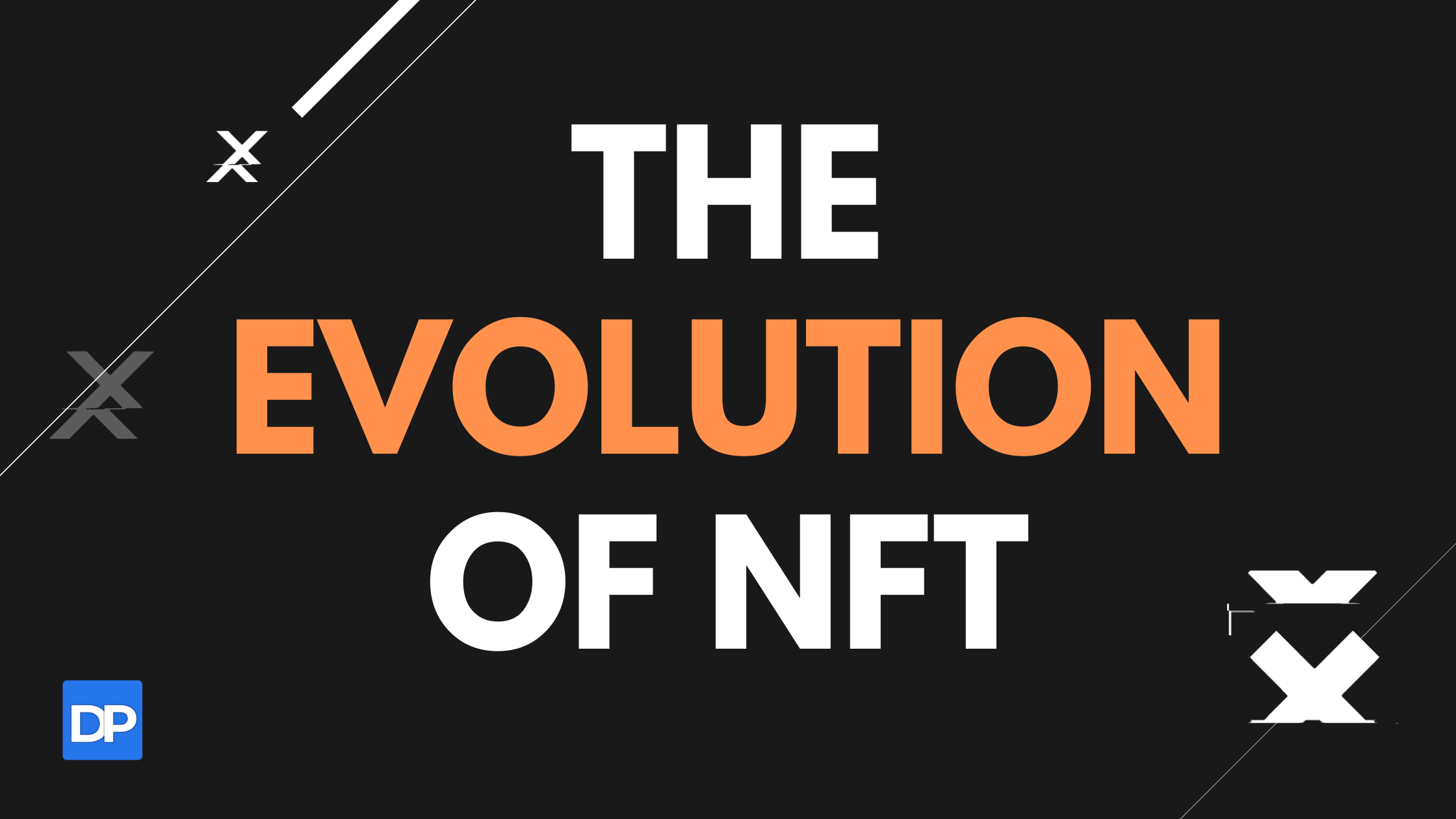You might hear the term NFT a lot. It has various meanings depending on the individual. For an artist, it is the media to get value for artwork, and for the investor, NFT is an opportunity for wealth. NFTs are the next-generation digital components to express oneself for the creators of metaverse and gaming enthusiasts.
If you’re an artist, creative content creator, or DeFi business owner, you must know the history and evolution of NFTs. You may also want to know the latest developments in the NFT industry. Continue reading this article and find out the history, evolution, and futuristic progress of NFTs.
The Appearance and Development of the NFT Standard
The history of NFTs dates back to early 2014 when the cryptocurrency market wasn’t in the booming stage. The first NFT asset is the Quantum created by Kevin McCoy. The NFT artist minted this NFT on a blockchain named Namecoin on May 2, 2014.
Quantum is a 2D pixelated image consisting of an octagon. Within the octagon, there are various shapes like arcs, circles, smaller octagons, etc. This first-ever NFT showed that the artists can now utilize decentralized technology to get a better value.
In April 2015, the Spells of Genesis developers and Counterparty co-developed in-game digital assets. The group also launched an ICO to fund their development program by issuing in-game currency BitCrystals.
In August 2016, one of the top-ranking North American card games, Force of Will, entered digital assets and blockchain technology through Counterparty. Thus, the crypto and blockchain enthusiasts saw the beginning of a new ear in card trading games.
In 2017 Cryptopunks NFTs entered the crypto sphere. These digital assets are essentially a hybrid experiment between ERC20 and ERC721. ERC20, a popular token for digital assets, has coding that enables crypto tokens to interact but couldn’t prove its utility for unique token creation.
Soon, ERC721 has become the standard for NFTs on the Ethereum blockchain. It could facilitate the movements and ownership tracking of NFT tokens from one smart contract.
CryptoKitties are highly popular NFTs based solely on ERC721 smart contract. These NFTs are essentially a blockchain-based virtual gaming system where each NFT would denote a unique cat that the owner can adopt, breed, or trade on the Ethereum blockchain.
Between 2018 to 2021, the NFT sphere has grown considerably. There are now several NFT marketplaces that host numerous NFTs, creators, traders, and gamers. Opensea, Mintable, Rarible, Binance, and Crypto are some of the big marketplaces that let you mint and trade NFTs.
The Transition of NFTs From Simple ERC-721 to Complex ERC-1155 and More
Ethereum blockchain dominates the NFT minting industry. Most of the NFT marketplaces facilitate Ethereum blockchain-based NFT minting and trading. ERC-721 and ERC-1155 are the gold standards for NFT on the Ethereum blockchain. However, there are other smart contracts too. The following smart contracts show how NFT minting technology is still evolving:
1. ERC-721
ERC-721 is the most popular standard for minting numerous NFTs by individuals or businesses. It doesn’t have any monetary rules in its smart contract programming. It also doesn’t have any mandatory standard for the NFT metadata.
Most decentralized exchanges (DEXs) support ERC-721 based NFTs. Hence, anyone can create their own NFTs effortlessly using the ERC-721 smart contract. It facilitates the easy integration of NFTs into NFT marketplaces, exchanges, Dapps, or wallets.
2. ERC-1155
ERC-1155 is the next evolution in NFT smart contracts on the Ethereum blockchain. This standard offers more programming options and newer features for the NFT industry. ERC-1155 opens the door for new digital asset classes and supports the transaction of a group or a collection of NFTs in a single instance.
ERC-1155 can consist of non-fungible tokens, fungible tokens, and semi-fungible tokens. Thus, it reduces the gas fees by up to 90% for new tokens. The token owner can use the same smart contract to upgrade or destroy the NFT.
3. Avalanche
The Avalanche protocol follows a multi-chain system to offer scalability, security, and programmability of the NFTs. Three different chains, namely the Platform Chain (P-Chain), Contract Chain (C-Chain), and the Exchange Chain (X-Chain) work simultaneously to offer a better NFT minting experience.
The protocol is also compatible with the Ethereum Virtual Machine. Thus, developers can effortlessly launch the Ethereum based NFTs or DApps on Avalanche without major re-programming.
4. Fractional NFTs
Fractional NFTs are also known as F-NFTs, and they facilitate multiple owners to own one digital asset infractions. Consider a premium property in the city or a luxurious yacht, that very few can own.
However, if the auction house can come up with to issue digital tokens in fractions, then a large segment of the traders can invest. F-NFTs will heavily influence the real-world markets of collectibles, real estate, artwork, and traditional investments.
The Next-Generation NFTs
The old-age 2D NFTs have moved on to the next generation NFTs that could hold high-volume metadata, multimedia, and animated content. The following NFTs offer futuristic value for the NFT sphere:
1. Mutable vs. Immutable
Immutability makes an NFT valuable since it can store unchangeable data to prove its ownership and content. However, that poses a problem when developers need to use NFTs in digital environments like games and the metaverse.
If an owner of the NFT gaming asset needs to upgrade it or develop their virtual real estate in a metaverse, then the owner needs to update the metadata. To address this issue, specialized NFTs can include mutable and immutable data.
On the WAX Blockchain or other EOSIO Blockchains, AtomicAssets is the smart contract that supports both immutable and mutable NFT data. Thus, this smart contract is suitable for in-game digital assets.
2. Static vs. Dynamic NFTs
Most of the NFTs that we see are static in nature. NFTs of unique digital art, animated video, or an image of a cat that won’t change after minting and changing hand to a new owner. That’s because of immutable smart contract metadata.
However, dynamic NFTs have evolved from static NFTs to include real-life data to the NFT asset. For example, the NFT trading card that you’ve bought which relates to your favorite baseball player will automatically include upgraded information when the player competes in a new season of baseball.
Oracles or API3s facilitate such data updates which connect the NFTs to the real world. The NFT will still exist as a truly ownable and decentralized digital asset.
2. Generative Art NFTs
These days, almost all of the NFTs have a predefined plan. The collector knows what they are getting, as a unique digital cat in the Cryptokitties game. However, there are these new NFTs in existence and becoming popular as Generative art NFTs.
The Art Blocks NFT project showcases a collection of a few unique Generative art NFTs that have more value, scarcity, and thus demand among the collectors. An artist codes the NFT, and a random algorithm determines the end product.
3. Multimedia NFTs
Thrush Holmes, a popular contemporary painter, has come up with a new class of digital assets in the non-fungible token space. He is calling it the Generative Multimedia NFT, which will combine generative NFTs along with physical elements crafted in-studio.
These NFTs are essentially derived from physical arts that the artist created in his studio. For example, spray-painted overlays, painted backgrounds, neon elements, etc.
Metaverse-Ready NFTs
NFTs will fuel the virtual economy of any future metaverse. Therefore, NFTs must evolve to meet the requirements of the metaverse that will exist soon. The followings are a few NFTs ready for metaverse adoption:
1. Augmented Reality NFTs
Conventional NFTs only represents a piece of art or a moment in your life like a video or a photograph. On the contrary, advanced NFTs like AR NFTs include more data like AR cues or elements. Thus, metaverse will require AR NFTs to project real-life items in a digital environment or on your body/face.
AR NFTs give you the ability to create immersive experiences in your metaverse that the users can visualize through AR hardware, software, or website.
2. 3D NFT
Virtualization of 3D assets and their distribution is the latest trend in the NFT sphere. 3D NFTs are promising significant breakthroughs in the NFT industry as 3D content will enable easy assimilation of NFTs in the digital gaming and metaverse industry.
3D NFTs will facilitate metaverse developers to develop a space for users to connect, play, interact, create, and take part in a decentralized economy in a more immersive way.
3. Animated Videos as NFTs
The constant technological development in blockchain smart contracts has facilitated the possibility of creating NFTs out of animated videos. In a metaverse environment, to stop piracy or creative animated videos, the owner can mint and circulate NFTs of their hard work. Animated video NFTs will also transform storage and content distribution.
Recently, a collector bought an animated video by Beeple for $6.6 million. The animated video had authentication from a blockchain so that no one other than the original owner can hold the unique animated video content.
4. Game-Ready NFTs
NFT creators and marketplaces are also advancing the NFT technology to the next level to support GameFi and metaverse gaming. Now, artists and gaming content creators can choose a metaverse of the GameFi environment and freely create content and then convert them to NFTs for the gamers to use.
Further, play-to-earn blockchain games in the metaverse are also driving new game-ready NFTs. Gamers of any metaverse will need numerous gaming assets in NFT form to equip them for the upcoming in-game competitions or modify their avatars for a unique identity.
The Mars CyberTruck NFT From Dappros
Dappros has developed a collection of CyberTruck NFTs in cooperation with Cyber Cradle. The NFT behind these digital assets are Rich / Metaverse NFTs. Thus, the CyberTruck NFT metadata can include more data than conventional 2D NFTs.
These NFTs would contain data, like optimization bundles, 3D model design, texture, and virtual space compatibility instructions like Decentraland supportability.


